Each year, countless women and children flee violence at home and take an uncertain journey in the hope of finding safety in a new country. While many escape conflict zones or generalized human-rights abuses, some also run from more intimate forms of violence—namely, sexual and domestic violence perpetrated by men. Setting off on the journey is no guarantee of safety; many are vulnerable to gender-based abuse in transit and even at destination. Along some migrant routes, half or more of women surveyed reported experiencing sexual assault during the journey, and many take birth control to avoid becoming pregnant from rape.
Gender-based violence is defined as “violence that is directed against a person on the basis of gender or sex,” according to the UN High Commissioner for Refugees (UNHCR). Though men and boys can also suffer from sexual assault, the majority of victims are women and girls, who tend to be the most vulnerable. Unequal power relations create the conditions for gender-based violence to occur, and it can be perpetrated or condoned by relatives, community members, or government actors. Such abuse inflicts sexual, physical, or mental harm, and can take the form of threats, coercion, sexual assault, intimate partner violence, or honor killings. Survivors experience a range of physical and psychosocial effects, including injury, sexually transmitted diseases, depression, post-traumatic stress disorder, social stigma, rejection, and isolation.
While gender violence is not uncommon among female migrants, individual cases of trauma and experiences accessing support vary considerably. This article explores the rates of gender violence among refugee, asylee, and migrant women; avenues of immigration available to survivors in the United States; and supports offered once women are lawfully admitted.
A Treacherous Journey
The rise of gender-based violence stemming from conflict is correlated with the changing nature of conflict itself. In the past, wars pitted countries against one another and had distinct battlegrounds; today, conflicts are largely contained within a country’s borders and are increasingly waged against unarmed civilians. Rape is used as a deliberate military strategy to disrupt communities and instill fear, and in ethnic conflicts as a tool for both “cleansing” and social control. Modern conflicts disrupt traditional social structures, leading to an increased risk of gender violence. Ethnic differences, socioeconomic discrimination, and group rivalries can exacerbate these risks. Lack of economic opportunity in societies where males are traditionally the providers can also lead to increased violence at home.
Instances of rape are particularly common in conflict zones. More than 20,000 Muslim women were raped during the Bosnian War in the early 1990s, while an estimated 250,000 to 500,000 women were raped during the 1994 Rwandan genocide, according to UNHCR. Further, 94 percent of households displaced during the decade-long Sierra Leone civil war reported at least one member experienced sexual assault. Ongoing armed conflicts reflect similar patterns: Upon their arrival in Tanzania, 23 percent of female Burundian refugees reported they had experienced gender-based violence, and mass rapes of relatives of government opponents or refugees are an element of the conflict in Burundi, according to the Women’s Refugee Commission. These figures are likely to be underreported, due to the stigma often assigned to survivors.
Even as they flee conflict zones, women and children remain at risk. Smugglers often target women and girls traveling alone by attempting to coerce those with limited financial resources into exchanging sex for a place on a boat. Nearly half of the migrant women and children surveyed in Libya for a 2017 UNICEF study reported sexual violence and abuse on their journey, often at multiple times or locations. The snapshot survey also found a growing number of female refugees take birth-control shots to prevent pregnancy due to rape, and one-third of respondents reported their abuser wore a uniform. Women and children who enter into “pay-as-you-go” schemes with smugglers are often left in debt, and as such are more vulnerable to abuse and trafficking.
Once in countries of first asylum, women and children can experience a lack of protection and security due to the social structure of predominantly male-led camps. Female refugees may be forced to sleep alongside male refugees, even if they are traveling alone, and camps often lack single-sex, well-lit toilet facilities. Burundian refugee camps in Tanzania have a high rate of sexual offenses, with up to 14 percent of children reporting assault, according to the Women’s Refugee Commission. In Greece, researchers from the Refugee Rights Data Project spoke to more than 300 refugees and aid workers in nine different camps and found instances of rape, forced prostitution, and forced marriage. Of the female refugees surveyed, 46 percent reported they did not feel safe in the camp, and 69 percent resided in dwellings without a secure lock.
Refugee girls face the additional risk of early and forced marriage, often because their families cannot support them. In 2013, 25 percent of Syrian refugee children in Jordan reported being forced into marriage, and 48 percent of these marriages involved a spouse ten or more years older. Female refugees who face gender-based violence and lack effective protection normally provided by male relatives comprise one of UNHCR’s refugee resettlement categories, however this does not necessarily place them at the front of the line for resettlement.
Surviving and Thriving?
Trauma among refugees and asylum seekers is undeniable, and the vulnerability of women and unaccompanied girls heightens the risk of further abuse at all stages of the journey. Though the evidence shows these women are significantly likely to suffer from gender-based violence, support services in the United States do not sufficiently address the health needs of this population. Globally, the situation is also dire: Fewer than 1 percent of all refugees will receive mental health support, and just $1 of every $1,000 devoted to humanitarian aid goes to mental health care, according to Reuters.
Even after reaching the United States, inadequate supports may still hinder the recovery of survivors. Current administrative practices, including increased immigration enforcement, exacerbate the fears already present in the unauthorized immigrant community and may discourage women from seeking out support services. These policies may lead to unintended consequences, especially if women remain with an abusive spouse or partner because of a fear of deportation, and may ultimately hamper their ability to not only survive, but thrive.



